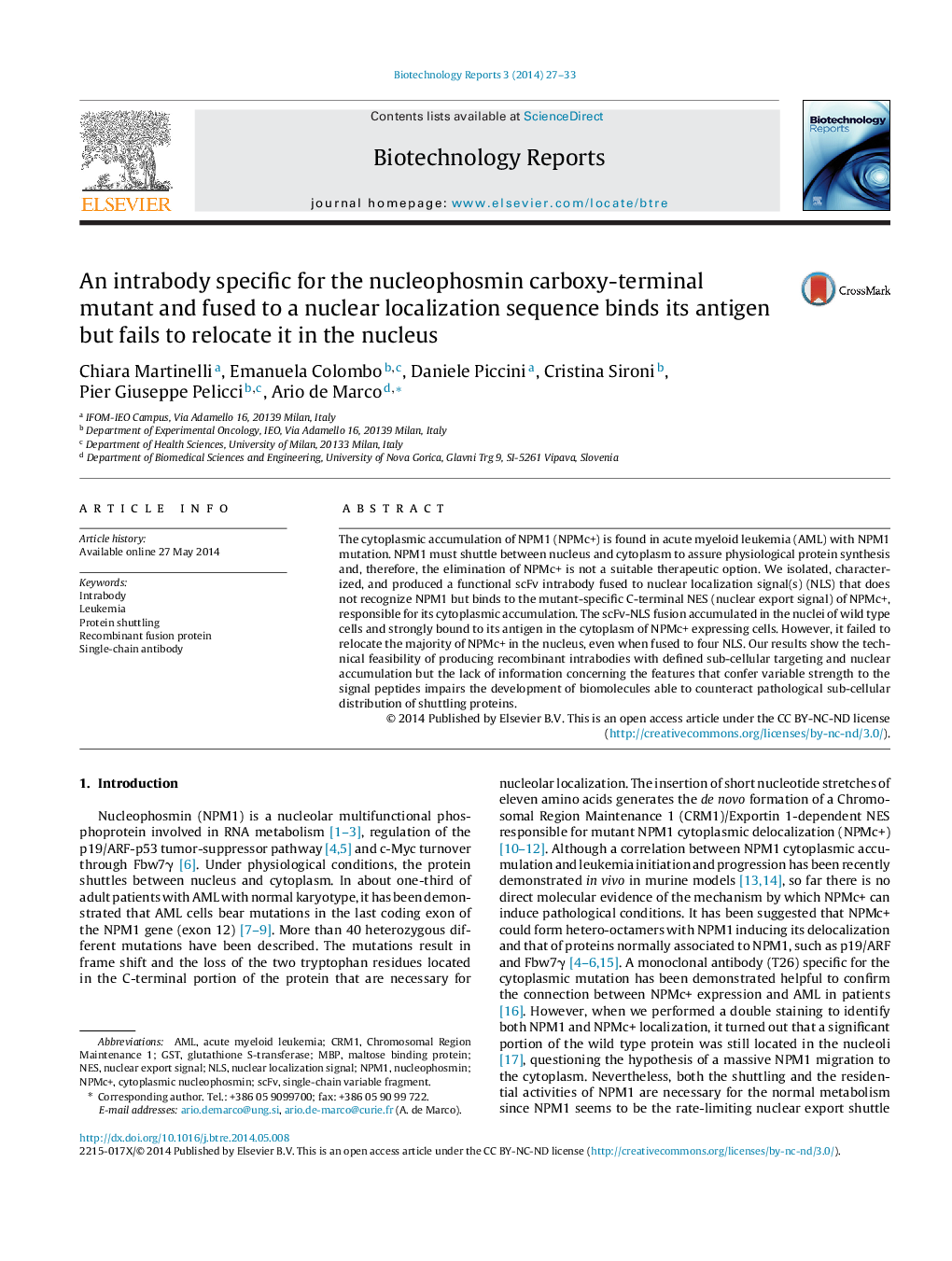| Article ID | Journal | Published Year | Pages | File Type |
|---|---|---|---|---|
| 870692 | Biotechnology Reports | 2014 | 7 Pages |
•A scFv intrabody specific for the NPMc+ mutant NES sequence was isolated.•It was expressed as a fusion with a NLS and such construct accumulates in the nucleus.•The scFv-NLS fusion binds its antigen in the cytoplasm of eukaryotic cells.•The complex shuttles to the nucleus but accumulates in the cytoplasm.•Stronger NLS should be developed to revert the strength of pathogenic NES.
The cytoplasmic accumulation of NPM1 (NPMc+) is found in acute myeloid leukemia (AML) with NPM1 mutation. NPM1 must shuttle between nucleus and cytoplasm to assure physiological protein synthesis and, therefore, the elimination of NPMc+ is not a suitable therapeutic option. We isolated, characterized, and produced a functional scFv intrabody fused to nuclear localization signal(s) (NLS) that does not recognize NPM1 but binds to the mutant-specific C-terminal NES (nuclear export signal) of NPMc+, responsible for its cytoplasmic accumulation. The scFv-NLS fusion accumulated in the nuclei of wild type cells and strongly bound to its antigen in the cytoplasm of NPMc+ expressing cells. However, it failed to relocate the majority of NPMc+ in the nucleus, even when fused to four NLS. Our results show the technical feasibility of producing recombinant intrabodies with defined sub-cellular targeting and nuclear accumulation but the lack of information concerning the features that confer variable strength to the signal peptides impairs the development of biomolecules able to counteract pathological sub-cellular distribution of shuttling proteins.
